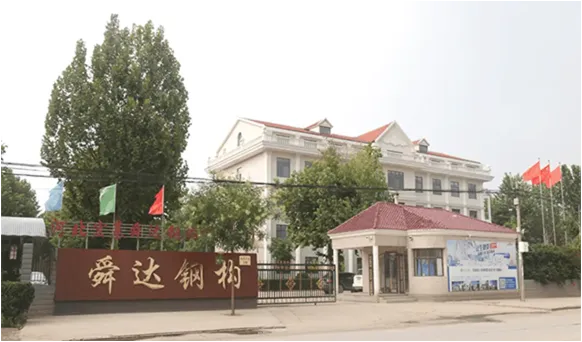- Afrikaans
- Albanian
- Amharic
- Arabic
- Armenian
- Azerbaijani
- Basque
- Belarusian
- Bengali
- Bosnian
- Bulgarian
- Catalan
- Cebuano
- Corsican
- Croatian
- Czech
- Danish
- Dutch
- English
- Esperanto
- Estonian
- Finnish
- French
- Frisian
- Galician
- Georgian
- German
- Greek
- Gujarati
- Haitian Creole
- hausa
- hawaiian
- Hebrew
- Hindi
- Miao
- Hungarian
- Icelandic
- igbo
- Indonesian
- irish
- Italian
- Japanese
- Javanese
- Kannada
- kazakh
- Khmer
- Rwandese
- Korean
- Kurdish
- Kyrgyz
- Lao
- Latin
- Latvian
- Lithuanian
- Luxembourgish
- Macedonian
- Malgashi
- Malay
- Malayalam
- Maltese
- Maori
- Marathi
- Mongolian
- Myanmar
- Nepali
- Norwegian
- Norwegian
- Occitan
- Pashto
- Persian
- Polish
- Portuguese
- Punjabi
- Romanian
- Russian
- Samoan
- Scottish Gaelic
- Serbian
- Sesotho
- Shona
- Sindhi
- Sinhala
- Slovak
- Slovenian
- Somali
- Spanish
- Sundanese
- Swahili
- Swedish
- Tagalog
- Tajik
- Tamil
- Tatar
- Telugu
- Thai
- Turkish
- Turkmen
- Ukrainian
- Urdu
- Uighur
- Uzbek
- Vietnamese
- Welsh
- Bantu
- Yiddish
- Yoruba
- Zulu
Nov . 17, 2024 06:14 Back to list
The Evolution of Industrial Building Construction
Industrial building construction has undergone significant transformations over the years, adapting to technological advancements, changing regulations, and the evolving needs of businesses. This sector plays a critical role in the economy, facilitating production and distribution across various industries. This article explores the key trends and factors shaping industrial building construction today.
Historical Context
The roots of industrial buildings can be traced back to the Industrial Revolution, when factories began to emerge as centers of mass production. These structures were designed to maximize efficiency and accommodate machinery, focusing primarily on functionality. Over the years, industrial buildings have evolved in response to changing technologies and production processes. The shift from steam power to electricity, and later to automation, has influenced not only the design and layout of these structures but also their construction methods.
Modern Design Trends
Today’s industrial buildings are designed with sustainability and flexibility in mind. As energy costs rise and environmental concerns become more prominent, many industrial constructions are incorporating green building practices. This includes the use of energy-efficient materials, renewable energy systems, and sustainable practices throughout the construction process. LEED certification and other sustainability ratings have become benchmarks for many new industrial facilities.
In addition, modern industrial buildings are increasingly designed to be adaptable. Businesses must respond quickly to market changes, and flexible building layouts can accommodate shifting operational needs. This adaptability often includes modular designs, which allow for easy expansion or reconfiguration of the space as business requirements change.
Technological Integration
industrial building construction

Advancements in technology have revolutionized the construction process itself. Building Information Modeling (BIM) is increasingly utilized in industrial building projects, allowing for precise planning and coordination among various stakeholders. This technology aids in reducing construction time and minimizing errors, leading to significant cost savings.
Moreover, the incorporation of smart technology in industrial buildings enhances operational efficiency. Automated systems for lighting, heating, and security can be integrated into the infrastructure, leading to optimized resource management and reduced operational costs. Additionally, IoT (Internet of Things) devices are making it possible to monitor and control equipment remotely, improving maintenance and safety protocols.
Regulatory Considerations
The construction of industrial buildings is also influenced by a complex framework of regulations. Compliance with zoning laws, safety codes, and environmental regulations is paramount. As governments worldwide tighten regulations regarding emissions and resource usage, construction practices must adapt accordingly. This often means conducting thorough environmental impact assessments and ensuring that projects align with sustainability targets.
The Future of Industrial Construction
Looking ahead, the future of industrial building construction appears to be focused on increased automation and sustainability. The rise of robotics in construction processes, combined with augmented reality (AR) for training and planning, suggests that the industry will continue to innovate. Furthermore, with the growing emphasis on reducing carbon footprints, eco-friendly construction methods and materials will likely become even more standard.
In conclusion, industrial building construction is a dynamic field that reflects broader trends in technology, sustainability, and regulatory frameworks. As businesses seek to improve efficiency and reduce environmental impact, the construction of industrial facilities will continue to evolve, offering both challenges and opportunities for stakeholders in the industry. The commitment to innovation, flexibility, and sustainability will define the industrial buildings of the future, ensuring that they meet the demands of a rapidly changing economy.
-
How Do Prefabricated Steel Structures Transform Modern Construction?
NewsJul.14,2025
-
How Do Prefabricated Metal Buildings Redefine Modern Construction?
NewsJul.14,2025
-
How Do Prefab Insulated Metal Buildings and Steel Structures Revolutionize Modern Construction?
NewsJul.14,2025
-
How Do Pre - Engineered Steel Structures Redefine Modern Construction?
NewsJul.14,2025
-
Advancing Modular Construction with Prefabricated Metal Structures
NewsJul.14,2025
-
Advancing Industrial Infrastructure with Prefabricated Steel Solutions
NewsJul.14,2025
Products categories
Our Latest News
We have a professional design team and an excellent production and construction team.












